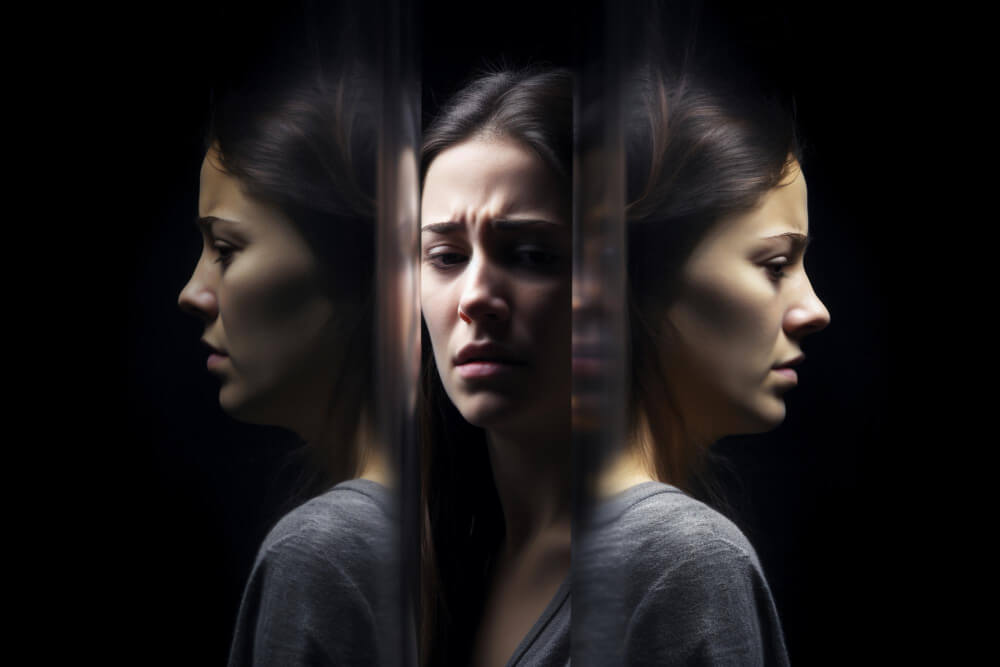Bipolar Disorder Treatment
Spectrum Health Hub offers specialized treatment for bipolar disorder at our clinics in Boulder, CO; Dayton, OH; and Albuquerque, NM, as well as through convenient telehealth services. Our experienced clinicians provide comprehensive care that includes medication management and evidence-based therapies, such as Dialectical Behavior Therapy (DBT), to help individuals manage mood fluctuations and achieve stability. Whether you choose to visit us in person or online, we are dedicated to supporting your journey toward a balanced and fulfilling life.

What is Bipolar Disorder?
There are several key features of bipolar disorder:
Manic Episodes
During manic episodes, individuals may experience an elevated or irritable mood, increased energy, racing thoughts, and a reduced need for sleep. They may engage in risky or impulsive behaviors, such as reckless spending, substance abuse, or engaging in risky sexual activities.
Hypomanic Episodes
Hypomania is a less severe form of mania, but it still involves increased energy and mood changes. Hypomanic episodes are not as extreme as full-blown manic episodes and may not lead to significant impairment in daily functioning.
Depressive Episodes
In depressive episodes, individuals with bipolar disorder experience symptoms typical of depression, such as sadness, hopelessness, low energy, changes in appetite and sleep patterns, difficulty concentrating, and thoughts of death or suicide.
Bipolar disorder can vary in severity and frequency of mood episodes. There are several subtypes of bipolar disorder, including:
Bipolar I Disorder
Characterized by at least one manic episode, which may be followed by depressive episodes or periods of relative stability.
Bipolar II Disorder
Characterized by at least one hypomanic episode and one major depressive episode, but not a full-blown manic episode.
Cyclothymic Disorder
Involves frequent periods of hypomania and depressive symptoms that do not meet the criteria for full manic or depressive episodes.
The exact cause of bipolar disorder is not fully understood, but it is believed to be a combination of genetic, environmental, and neurobiological factors. It typically emerges in late adolescence or early adulthood, but it can develop at any age.
Treatment of Bipolar Disorder
The treatment of bipolar disorder typically involves a combination of medications, psychotherapy, and lifestyle management. The goal of treatment is to stabilize mood, reduce the frequency and severity of mood episodes (manic, hypomanic, and depressive), and improve the person’s overall quality of life. Treatment approaches may vary depending on the specific type and severity of bipolar disorder, and individual needs. Here’s an overview of the common components of treatment:
Medications
- Mood Stabilizers: Medications like lithium, valproic acid, and lamotrigine are commonly used to stabilize mood and prevent manic and depressive episodes.
- Antipsychotic Medications: Some atypical antipsychotic drugs, such as quetiapine, aripiprazole, and olanzapine, can help control manic or mixed episodes.
- Antidepressants: In some cases, antidepressant medications may be prescribed cautiously, along with a mood stabilizer, to address depressive symptoms. However, this should be done under close supervision due to the risk of triggering manic episodes.
- Medication Management: Regular monitoring and adjustment of medications by a psychiatrist are crucial to finding the right combination and dosage for each individual.
Psychotherapy
- Cognitive-Behavioral Therapy (CBT): CBT can help individuals with bipolar disorder learn to manage their thoughts and behaviors and develop coping strategies to deal with mood swings.
- Interpersonal and Social Rhythm Therapy (IPSRT): IPSRT focuses on regulating daily routines and stabilizing social rhythms to help prevent mood episodes.
- IFamily-Focused Therapy): Involving family members in therapy can provide support and improve communication within the family, which is essential for managing bipolar disorder.
Lifestyle Management
- Regular Sleep: Maintaining a consistent sleep schedule is crucial, as disruptions in sleep patterns can trigger mood episodes.s with bipolar disorder learn to manage their thoughts and behaviors and develop coping strategies to deal with mood swings.
- Stress Reduction: Learning stress management techniques, such as mindfulness or relaxation exercises, can be helpful in preventing episodes.
- Avoiding Alcohol and Drug Use: Substance abuse can exacerbate bipolar symptoms, so it's essential to avoid alcohol and recreational drugs.
- Healthy Lifestyle: Regular exercise and a balanced diet can contribute to overall well-being.
Psychoeducation
Support Groups
Support groups provide a sense of community and understanding among individuals with bipolar disorder. Sharing experiences and coping strategies can be valuable.
Take control of your mood and well-being—visit Spectrum Health Hub in Boulder, Dayton, or Albuquerque, or connect with us via telehealth today!
